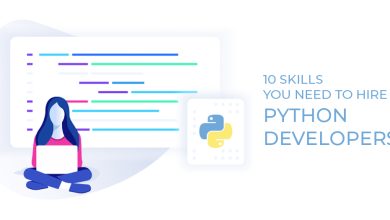5 Tech Tips to Be Best Protected Against Cyber Attacks

Security has never been more critical than it is right now. As we spend more time online, we often generate and share increased personal data. And if this data is misused, private and financial information may be compromised. Thus, securing sensitive data is crucial for both organizations and people.
If a data breach compromises your personal information, private information becomes public. Hackers may get access to sensitive data such as your Social Security number or financial information. And identity theft is one of the most typical consequences of data breaches.
There are further implications for a corporation that has suffered a data breach. Businesses may lose income or incur extra-legal, public relations, or insurance expenses. Intellectual property rights might be jeopardized. Additionally, a data breach may be detrimental to a brand’s image.
1. Adopt a zero-trust policy.
Security experts throughout the sector are adopting a zero-trust security philosophy. Whether within or outside the security perimeter, no device, person, task, or system should be trusted by default. However, basing your security around a zero-trust strategy often introduces complications and security holes.
The objective is to build a zero-trust security architecture that consolidates various security services. Consider the seven principles of the extended zero trust security model as you rethink your security: zero trust networks, workloads, people, data, devices, visibility and analytics, automation, and orchestration.
2. Ensure that your software and systems are always up to date.
Often, Cyber Attacks occur due to your systems or software being out of date, creating vulnerabilities. Hackers take advantage of critical flaws for attackers to access your network. Once they’ve gained in, it’s too late to take prophylactic measures.
It’s prudent to invest in a patch management system that will monitor and handle all software and system updates, ensuring that your system remains robust and current patches as part of their managed security services solution.
3. Be Wary of Phishing Scams
Phishing attacks are among the most dangerous forms of cybersecurity because they are so simple to fall for. In a phishing attack, a hacker impersonates a known individual to deceive the receiver into clicking a malicious link, disclosing vital credentials, or installing software that infects the recipient’s machine with a virus.
The simplest method to prevent phishing scams is to avoid emails from unexpected senders, search for grammatical mistakes or other suspected anomalies in suspicious emails, and hover over any link you get to verify its destination.
4. Maintain current threat intelligence.
Threat intelligence integrates data from numerous sources to provide your network with more effective security. To defend against zero-day attacks, companies must first acquire insightful, real-time threat intelligence that gives up-to-date information on the latest attack paths and hacking tactics.
All Cyber Attacks surfaces must be covered by threat intelligence, including cloud, mobile, network, endpoint, and IoT. Additionally, you want comprehensive intelligence to detect and prevent threats in real-time, efficient management of security services to monitor your network, and a specialized incident response team to promptly react to and resolve assaults.
5. Use a range of different passwords.
Even if you have over a dozen distinct logins for the web services you use, the truth remains that unique passwords are a critical component of online security. Suppose you use the same password for email, online banking, and social media.
In that case, the susceptibility of your information is significantly enhanced since a successful breach of one account opens the door to all other accounts using the same password. Ensure that your passwords are unique for each account.
Additionally!
Educate your employees
Employees are one of the most popular methods for cybercrooks to access your data. They’re going to send bogusly
Emails will be sent impersonating a member of your organization, requesting personal information, or accessing specific files. Links often seem natural to the untrained eye, and it’s easy to fall for them. It is why employees must be informed. One of the most effective strategies to safeguard your organization from cyber-attacks and other data breaches is to educate your staff on cyber attack prevention.
Apart from this, if you are interested to know How to Make Use of Your Old Tech Devices then visit our Tech category.





